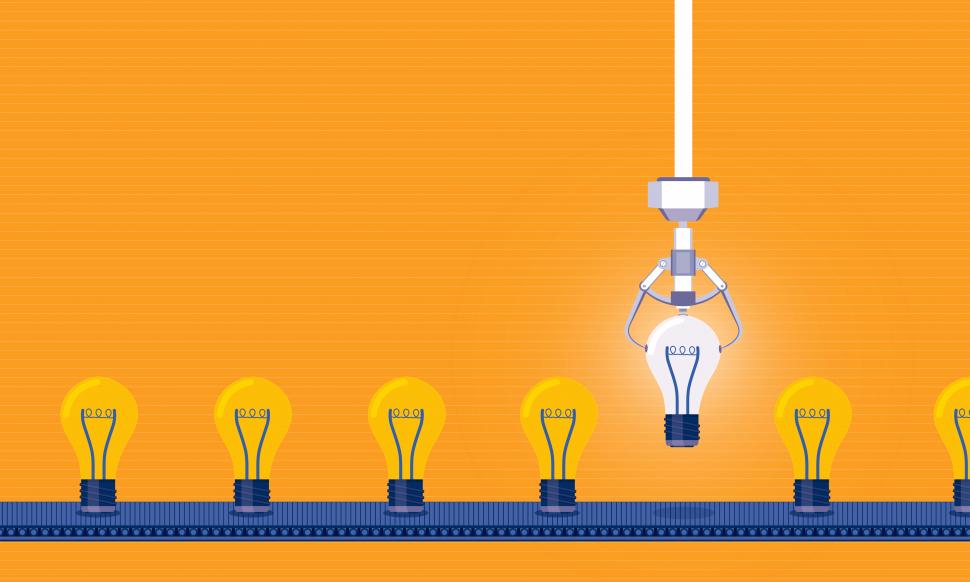How to Make Your Product Development Process More Efficient
Tighten up your product development process with these tools and tips. You’ll increase efficiency and reduce time from conception to completion.
Begin by using some general tips for saving time and money on your product development process. Select a single manager to be in charge of the workflow. This will greatly improve communications. If you don’t do everything at your facility, select a partner that will take your project from idea to completion. The fewer companies that contribute to your project, the more efficient the process will be.
Improve the Design Phase
During the design phase, you need to change your thinking. If you’re still finding a single solution to multiple problems, you’re not thinking like a designer. Consider the problems your customers have and think of several solutions a product could perform. After identifying issues your customers have, design a prototype of your product that can fix those issues. Remember, you don’t have to include all the features right away. Ideally, including 20 percent of what they ask for will be enough to get the ball rolling. You can always roll out additional features at later stages. Finally, conduct multiple tests of your prototype before moving on to production.
One test you should do during the design phase is design verification testing. Start with a clearly outlined written test procedure. You will need to maintain a log of your tests. You’ll easily determine if the design caused problems or if cheap materials or poor production resulted in failure.
During the testing phase, you have a couple of tools to help with the process. Wercker lets you conduct testing automatically. Another program you should use during testing is Invision. This program creates an image of how your customers experience your product. Don’t neglect your testing phase. Changes to your prototype are much cheaper than updates to the final product.
Make Workflow More Efficient
An efficient workflow has clear expectations of everyone and open communications. Sharing information is a vital part of the process. Use Google Docs for sharing documents in the cloud with others collaborating on the project. For more in-depth sharing, opt for a screen-sharing program such as Screen Hero. This program lets multiple users control the same desktop.
To ensure your project continues efficiently, verify your entire workforce has the same vision. Everyone needs to agree on expectations. A planning meeting before the design phase can help get everyone on the same workflow. During this meeting, update any flowcharts you have for existing projects and create a new one for your current job. You’ll be able to see exactly where all your projects are with a quick glance at the charts.
Increase Preproduction Effectiveness
Preproduction is your last chance to make major changes to your product. Redundant testing is ideal for preproduction. Test either with potential users or with your design team. Ideally, you’ll use both groups for the most accurate testing. You only need five potential users to identify 85 percent of the core problems with your product.
If your device has an electronic component, use this opportunity to conduct electromagnetic compliance tests of your designs. Doing it now rather than waiting for the official compliance tests can save you money. Because half of products fail final electromagnetic compliance tests, preproduction testing can save you retesting costs.
Testing your product before it goes to production is not an optional step. This will be one of the most important aspects of your process. Choose multiple means of testing such as diary tests, guerrilla testing and usability testing. The more tests you perform, the more accurate your results will be.
Complete the Process
Only after extensive testing will your project finally be ready for production. During this phase, you determine the success or failure of the product. Return on investment (ROI) is the best indicator of whether a product was well received or not, but it can be difficult to meet expectations. If your product attains the expected ROI, it was one in 100, statistically. In fact, one in 10 products gets even a positive ROI.
Has your product been successful? If not, look at your team. Do they all agree on the process? Did you do adequate testing? How efficient was the workflow? Saving money along the way can help boost your final ROI. Your product development process can improve its efficiency with a combination of both old and modern technology. Take advantage of these tools to make your process better and increase your ROI.
Megan Ray Nichols
STEM Writer & Blogger
email: nicholsrmegan@gmail.com
Website: https://schooledbyscience.com/
Resume: https://schooledbyscience.com/about/
Did scientists discover another planet? Invent a new gadget? Reverse climate change? Subscribe today get the latest news.
Leave a Comment
You must be logged in to post a comment.








